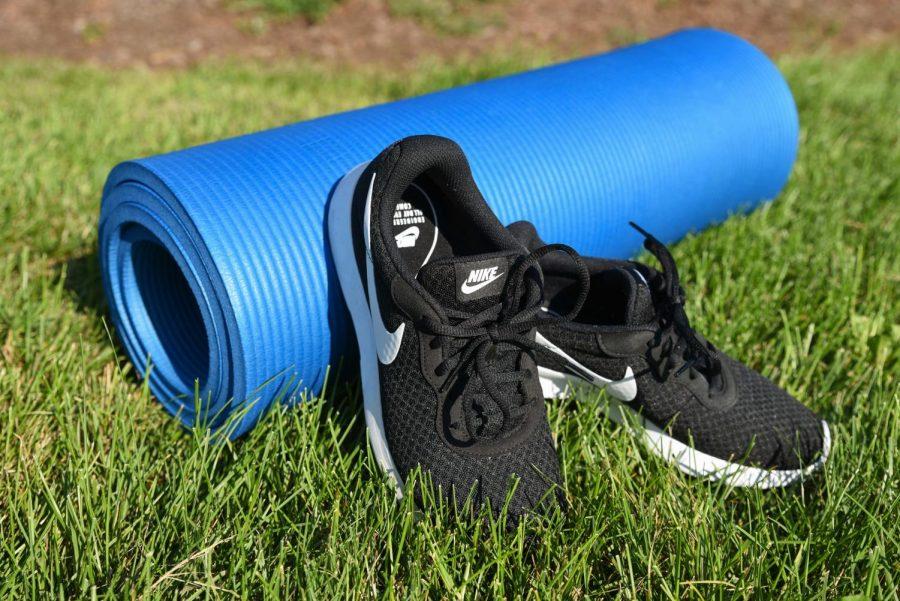Opinion | COVID-19 exemplifies irony in wellness culture
August 26, 2020
Especially in the time of COVID-19, as many people find themselves with more time on their hands, social media has become saturated with wellness influencers, food bloggers and workout junkies.
I’m not sure anyone can clearly define wellness culture — which is what many of these influencers promote. On the surface level, it’s presented as a way of prioritizing health with semi-rigid exercise routines and juice cleanses. But it’s rooted in capitalist ideas that promise if you work hard, you’ll be rewarded. If you do more, if you’re more disciplined and committed, you’ll get ahead. Wellness culture has left people waking at 3 a.m. to lift at the gym before work and buying gluten-free flour in the name of health. Both of which are OK — if that’s how someone chooses to live, but wellness culture is often marketed as a way of maintaining a “holistic” lifestyle. Too often it focuses on weight maintenance, weight loss and appearance and neglects equally important factors of wellness like sleep, energy levels, rest and flexibility. The problem isn’t wellness itself, but the way — culturally — we seem to define wellness.
Wellness culture was roiled with irony and hypocrisy for years before the COVID-19 pandemic, where influencers gloated about their early morning workouts without addressing lack of sleep, or promoted exercise as a cure-all for stress relief, even though it sometimes has the opposite effect. Nonprofessionals offer eating and workout plans, though all bodies have completely different needs. But the narrow definition of wellness has become clearer within the past six months, as gyms reopen and many folks rush back, even as COVID-19 remains uncontrolled in the United States.
Scientists are generally unsure about how big a risk returning to the gym is. A small study of gyms in Norway, which concluded that there wasn’t higher transmission after visiting a gym, provided justification for many people itching to go back to the gym. But the problem is, Norway had about 9,000 confirmed cases at the time, whereas the United States was edging toward 2 million. Scientists said it’s nearly impossible to make a direct comparison between the two countries.
Like most activities, gym safety depends on the number of cases in your specific area, your gym’s cleaning policy and how many people are allowed to enter at once. But in general, we know that it’s much safer to be outside, and that the virus can likely be spread through air particles. This is to say, talking face to face with someone is a risk factor, let alone breathing heavily during exercise. Even if gyms space out cardio equipment and rigorously sanitize, the World Health Organization announced in July that the virus can still linger in the air and infect people.
One of the defining characteristics of wellness culture is choosing not to engage in something even if the opportunity is presented. For example, if someone serves cake at a party, have only one slice, or eat none at all. Take your coffee black instead of adding cream, and though it might be tempting to sleep until noon, forgo the sleep to get your run in. All, of course, in the name of wellness. This raises the question, then, of why people who claim to be invested in wellness would rush back into fitness facilities when it’s so obvious there are safer ways to exercise — even if the workout won’t be exactly the same. It raises the question, too, of whether or not the cultural obsession with “wellness” is actually about holistic health at all.
I understand that some people have carefully assessed the risks of returning to the gym and other fitness facilities. If you’ve done so, and you honestly feel like it’s an acceptable choice to return, if you’re not putting your pod members at an extreme risk, then return to the gym. But it also might be worth looking at other options. Ask yourself if you want to return to the gym because you feel that you can do so safely, or because you feel like your self worth is tied to the way your body looks and whether or not you have a good workout.
Lately, when I make decisions about my health and coronavirus, I’ve been thinking of a friend of mine who owns a yoga studio, which she has decided not to reopen in the middle of the pandemic. As she said, she doesn’t know how she can reopen while simultaneously claiming to be part of the wellness industry.
Americans rushing back into gyms is problematic. They’re often unsafe, and it’s quite obvious that a single person’s actions put everyone they interact with at risk. But this also gives us a chance to look squarely at the way we define wellness. To realize that we do, in fact, live at the mercy of a wellness industry that is only sometimes actually about wellness.
Leah writes primarily about literature, houseplants and the spices of the world. Write to Leah at [email protected].









